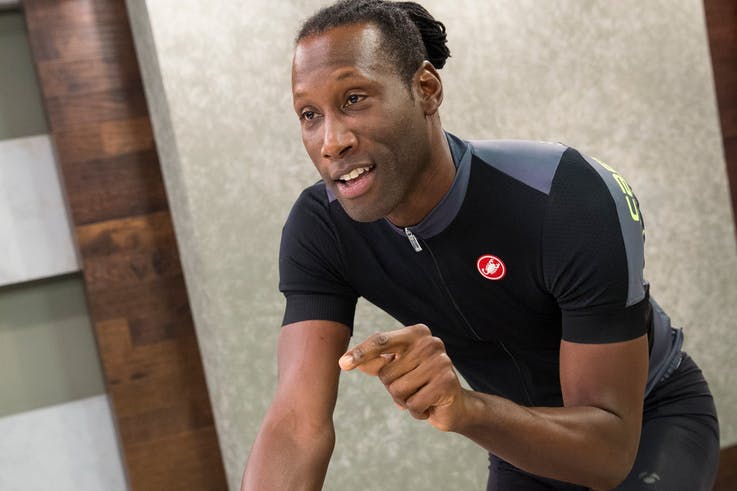The best-kept secret in town? An at-home workout provider takes off in the pandemic

Usage of the fitness and wellness coaching service Wellbeats skyrocketed earlier this year, one of those companies that offered what the world really needed in a pandemic.
It’s set up to provide more than 30 channels of fitness-class instruction and coaching over the internet.
This was not some sort of accident, another case of a company that found opportunity in a disastrous time for lots of other businesses. Wellbeats had been working on improving convenience for users for a long time.
The same is true for the founders of Netflix, an essential entertainment programming service in 2020 that wasn’t thinking ahead to a pandemic. The company got its start in the movie distribution business back when even the DVD was new and unfamiliar.
The founder of the booming retailer Amazon.com, Jeff Bezos, was talking about his obsession with improving the customer experience more than two decades ago. There are a lot of ways to improve convenience. To make it easier, just think about things that cause friction in the process of trying to buy or use a product. The best businesses try to eliminate them.
Friction can happen in so many ways, from having to wait a week to get into the car dealer’s shop when the “check engine” light won’t go off to getting no response on an e-mail to customer service that was just looking for clarification of the shipping date.
The Wellbeats team also talked about user convenience in a slightly different way, by describing how they break down barriers to get people to exercise more.
Not enough time is one barrier, and unfamiliarity with the world of gyms and workouts is another. Some people thought of gyms as an unaffordable luxury or didn’t feel comfortable going to one, even before coronavirus.
Wellbeats, based in St. Louis Park with nearly 50 employees and growing, is not exactly an upstart now with a dozen years of history. Its model could be called a B to B to C, meaning it’s a business that sells to other businesses for their consumers to use the product, like employees or members in a health insurance plan.
It got its start with a different name and a slightly different business, enabling a fitness-class experience for users of gyms like Anytime Fitness, which weren’t usually big enough or staffed for large classes.
The original Wellbeats product was both hardware to equip a fitness room, including a big screen, and a provider of instruction and encouragement with a virtual coach.
There were a number of hassles with this model, CEO Jason Von Bank said, including coordinating installations all over the country, some of which were complicated.
The company then decided to make all of its fitness content available online and turn over the hardware implementation to Best Buy Co. for customers who might still need equipment.
With Wellbeats no longer dependent on the customer even having any special room at all, its real value — the content and personalized recommendations for users — could be delivered wherever and whenever the end-user held a smartphone.
That opened up the opportunity to sell to employers as well as health insurers, who could then make the service available to their clients’ employees.
The company had done its homework, Von Bank said. Wellbeats knew that two-thirds of employees in surveys said they would use an electronic app for fitness help if the employer offered it. And employers were realizing that one common approach, reimbursing an employee for using a gym, was not only more expensive but only tended to reward people who were going to use a gym anyway.
The greater payoff, in improved health and well-being and thus likely lower health insurance costs, is for employers to help a lot more of their employees become more active and healthier.

“We were getting great traction,” Von Bank said. “We were probably adding a couple of million bucks of [annual recurring revenue] every year. But once COVID hit, everything changed.”
In a typical month, maybe one in five eligible potential users actually got on the service. This spring, total usage shot up about 900% as government orders, or common sense, drove people to stay at home.
Each new user answers some simple questions to help guide a personal program, to keep Wellbeats from doing things like suggesting cycling classes to users who don’t have a stationary bike. If one preference is yoga, then the user will see more yoga options.
The company’s system becomes savvier in its recommendations as it gains more experience with each user.
In addition to online versions of the live classes you might find in a big fitness club, Wellbeats has classes for seniors, people with conditions like a history of back pain, even active play programs for young kids. One of the biggest areas of growth this year has been programming for kids.
HealthPartners and the Minneapolis Public Schools are both new to the service this year; both were happy to have the access when COVID-19 broke out.
“At 1.2 million subscribers, we are not far off of Peloton right now,” Von Bank said, referring to the at home-cycling company. “We are the best-kept secret in town. On one hand that’s great, but I think we can have so much more impact.”
By: Lee Schafer, Star Tribune
To read the full article featured in the Star Tribune, click here.